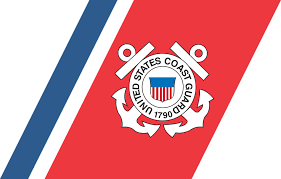

Current Location: 24.3N, 80.2W
Geographic Reference: 95 miles ESE of Key West, FL
Movement: West-northwest at 18 mph
Max Winds: 30 mph gusting to 40 mph
Current Hurricane Severity Index: 0 out of a possible 50 points (0 size, 0 intensity)
Max Predicted Hurricane Severity Index: 3 out of a possible 50 points (1 size, 2 intensity)
Current Radius of Tropical Storm-Force Winds: 0 miles
Max Predicted Radius of Tropical Storm-Force Winds: 50 miles
Organizational Trend: Slowly Becoming Better-Organized
Forecast Confidence: Average
Chance of Development: 95 percent
Key Points
1. Disturbance 30 is expected to become a tropical depression this afternoon
2. The system is not expected to become more intense than a weak to moderate tropical storm.
3. Regardless of tropical development, the main impact over land will be heavy rain across south Florida and along the central Gulf Coast.
Our Forecast
Overnight satellite imagery indicates that a surface circulation may be forming in association with Disturbance 30 (NHC Potential Tropical Cyclone Seven). We expect that the system will become a tropical depression later today. Environmental conditions in the Gulf of Mexico appear as if they will be marginal for further development. Therefore, our forecast continues to be for the system to move into the northern Gulf Coast as a weak to moderate tropical storm with winds around 45 mph. Weakening should occur after landfall.
The model guidance has shifted slightly to the east. Our forecast goes along with this scenario, taking the system through the Florida Keys this morning and then toward southeast Louisiana or southern Mississippi. Landfall is likely to occur late tomorrow afternoon or tomorrow evening. After landfall, we expect a significant reduction in forward speed, with a continuation of a west-northwest to northwest heading. This would take the system through Louisiana and into extreme northeast Texas on Thursday.
It should be noted that the heavy rains are likely to persist even after the system weakens to a remnant low. A map of the projected rainfall totals has been attached to this advisory.
Expected Impacts on Land
Southern Mississippi Through Northeast Texas: Locally heavy rainfall could result in street flooding that leads to travel delays Tuesday afternoon through Friday. The greatest risk for southeast Louisiana and southern Mississippi will be Tuesday and Wednesday, while the risk for Texas will mainly be Thursday and Friday.
Expected Impacts Offshore
Squalls will begin reaching the deepwater areas off the southeast Louisiana coast by early Tuesday morning, meaning the last full day for any helicopter evacuations of offshore personnel will be today. Wind gusts in squalls could reach up to 60 mph on Tuesday, along with locally very rough seas.
Our next advisory will be issued by 10 AM EDT / 9 AM CDT.
Meteorologist: Derek Ortt
![]()
| Forecast Confidence: Average | Hurricane Severity Index | ||||||||
|---|---|---|---|---|---|---|---|---|---|
| Fcst Hour | Valid | Lat. | Lon. | Max Sustained Winds | Max Gusts | Category | Size | Intensity | Total |
| 0 | 3AM CDT Mon Sep 03 | 24.30N | 80.20W | 30 mph | 40 mph | Tropical Disturbance | 0 | 0 | 0 |
| 12 | 3PM CDT Mon Sep 03 | 25.80N | 83.30W | 35 mph | 45 mph | Tropical Depression | 0 | 1 | 1 |
| 24 | 3AM CDT Tue Sep 04 | 27.50N | 86.00W | 40 mph | 50 mph | Tropical Storm | 1 | 1 | 2 |
| 36 | 3PM CDT Tue Sep 04 | 29.00N | 88.50W | 45 mph | 60 mph | Tropical Storm | 1 | 2 | 3 |
| 42 | 9PM CDT Tue Sep 04 | 29.80N | 89.80W | 45 mph | 60 mph | Tropical Storm | 1 | 2 | 3 |
| 48 | 3AM CDT Wed Sep 05 | 30.50N | 91.00W | 40 mph | 50 mph | Tropical Storm | 1 | 1 | 2 |
| 60 | 3PM CDT Wed Sep 05 | 31.50N | 92.50W | 35 mph | 40 mph | Tropical Depression | 0 | 1 | 1 |
| 72 | 3AM CDT Thu Sep 06 | 32.50N | 93.50W | 30 mph | 35 mph | Remnant Low | 0 | 0 | 0 |
| 84 | 3PM CDT Thu Sep 06 | 33.00N | 94.50W | 30 mph | 35 mph | Remnant Low | 0 | 0 | 0 |
| 96 | 3AM CDT Fri Sep 07 | 34.00N | 95.50W | 30 mph | 35 mph | Remnant Low | 0 | 0 | 0 |
The yellow cone represents track error from the previous five hurricane seasons. Over the past five hurricane seasons, the center of the storm tracked within the yellow cone 75% of the time. The cone does not represent the forecast uncertainty in the current advisory for this storm. In addition, hurricane-force winds, very high tides, large waves, and heavy rainfall can often extend well outside the yellow cone.



